A restaurant kitchen typically occupies about 40% of the total floor space allocated for the restaurant. With all the cooking equipment, refrigeration, storage, and food preparation space needed to make a kitchen function optimally during high-intensity food service shifts, you want to ensure the kitchen design maximizes the available space and ensures a safe work environment for all staff. As a restaurant grows and starts to thrive, it may be necessary to remodel the kitchen so that it can handle more food orders.
Having an efficiently run kitchen can make or break a restaurant. If your kitchen layout is not making your restaurant run like clockwork, there are some tweaks and changes you can make to improve efficiency and safety. But knowing what areas of a restaurant kitchen need remodeling can feel overwhelming when you are trying to make the restaurant run better. This article will highlight the most important aspects to consider when doing a restaurant kitchen remodel.
Do a Kitchen Remodel to Optimize Good Workflow and Efficiency In the Restaurant
Restaurant kitchens have a lot of zones that allow the chefs and line cooks to prepare different types of meals that the guests order. Ensuring that the kitchen layout delineates these different prep areas so that safety standards are adhered to and cross-contamination doesn’t occur is paramount. A good layout also ensures everyone’s safety and efficiency because people aren’t bumping into each other as they move around while cooking.
Hire a kitchen design team that will help you map out the various areas in a way that ensures dishes move through their stages of cooking and assembly seamlessly. The designer will also consider other functions in the restaurant other than only cooking when designing a good layout. The remodeling team will also need to be aware of health and safety codes for the particular region. So, for instance, a kitchen renovation company in Toronto is the ideal one to hire for a restaurant remodel in Toronto. You can find more details here about how they will help to create a layout that optimizes the restaurant kitchen’s workflow and efficiency.
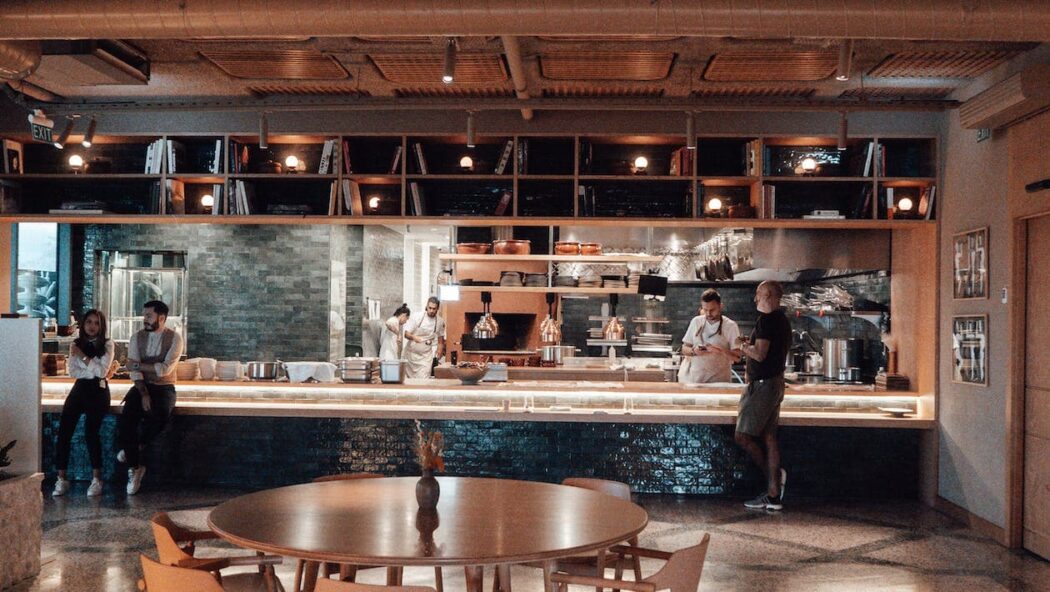
Select Kitchen Appliances and Prep Surfaces Based On the Type of Food To Be Served
There’s no use having a pizza oven that takes up an entire corner of the kitchen space if your restaurant doesn’t even serve Italian food. Similarly, assigning limited space to vegetable preparation in a vegetarian or vegan restaurant will undermine the restaurant’s success. This means that you need to consider the type of food sold on the menu to help decide what essential appliances and utensils you need to buy and install during the remodel.
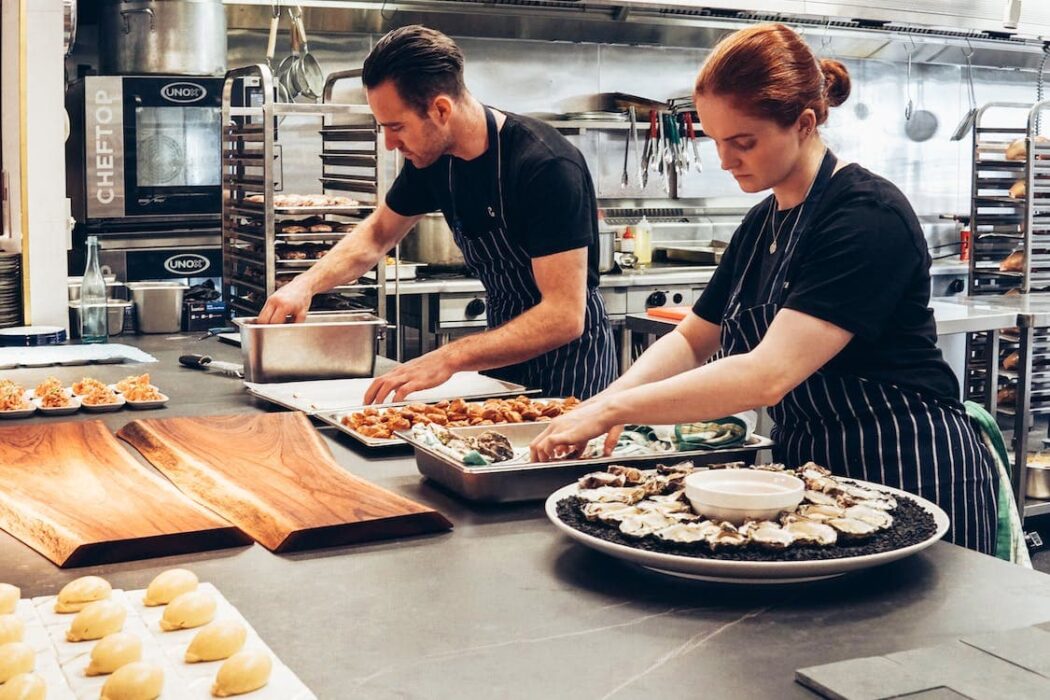
Understand the Types of Servicing Procedures and Intervals For Commercial Kitchen Appliances
Large commercial kitchens like the ones in restaurants have specially designed equipment that can withstand daily intense use. But it is also important to properly clean and maintain these appliances so that they continue to work properly and you don’t find yourself with a costly breakdown and repair right in the middle of dinner service.
Ask the sales representative about the service intervals and how long the appliance will be out of order when undergoing maintenance when you purchase the items so that you can decide if it fits with your plans and schedule. Knowing how to properly care for restaurant equipment will help you choose the right appliances and avoid expensive repairs or replacements in the future.
Plan Properly for Receiving Produce and Other Deliveries
Restaurant kitchens receive large deliveries of produce, meat, seafood, and any other ingredients that are needed to prepare the dishes on the menu, so having a delivery entrance and station where the food items can be organized is essential.
Plan the layout so that delivery activities don’t interfere with food preparation that may be going on during lunchtime or before the dinner time rush. Ideally, this area should also be cool to maintain the established cold chain for certain types of food.
Refrigerated foods that need to stay cold when being transported, stored before cooking, and during processing include:
- Meat
- Chicken
- Fish
- Shellfish
- Dairy products
- Eggs
- Stocks
- Fruits and Vegetables
- Salsas and prepared sauces that are already cold.
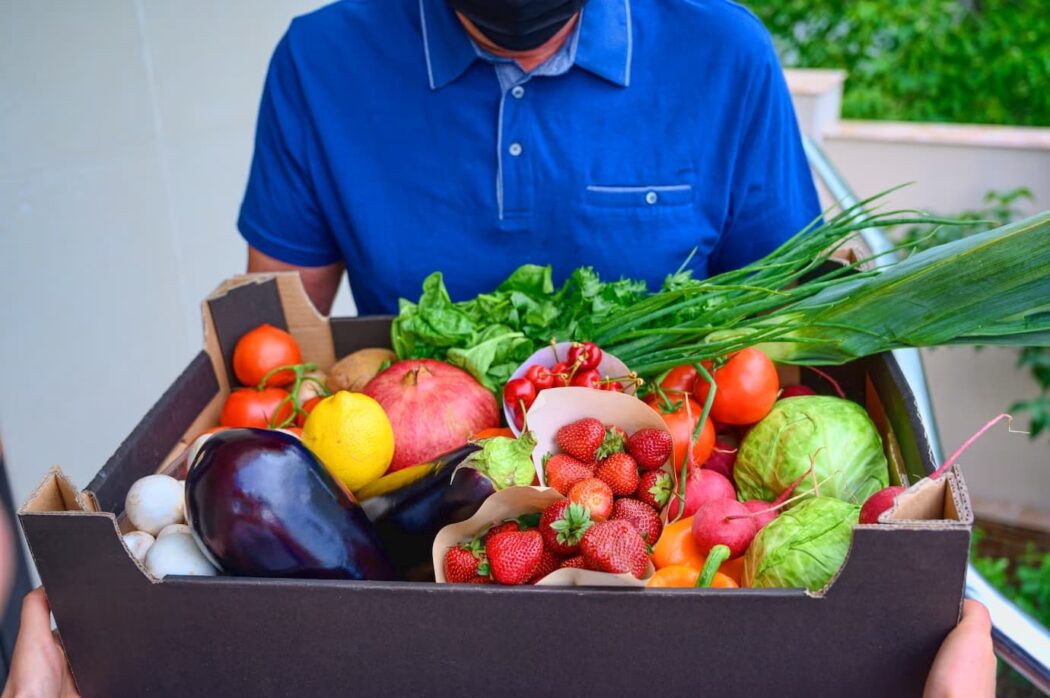
Make Storage a Priority to Reduce Food Spoilage
Having appropriate storage for all the food products that are delivered will ensure the cooks have easy access to them and that nothing is spoiled. Restaurant kitchen storage is categorized into three main types:
- Low-temperature storage — This is anything frozen.
- Medium-temperature storage — This is all refrigerated foods.
- Dry goods storage — This includes all preserves, condiments, spices, pastas, and other dry or non-perishable foods.
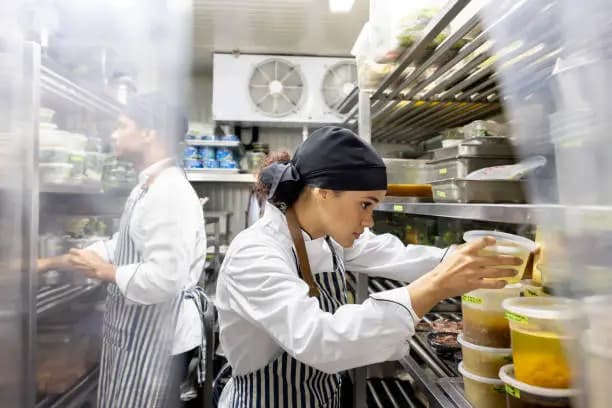
Optimize the Kitchen Layout for Server Efficiency and Ease
One of the best kitchen layouts for a restaurant kitchen is to have the “Dish-Pit” or wash-up area at the entrance of the kitchen so that waiters can drop off their dirty dishes on the way in and free up their hands to pick up food that is ready to go out into the restaurant and be served to guests. This ensures no servers enter or leave empty-handed and that food is always served hot, straight off the grill, to guests.
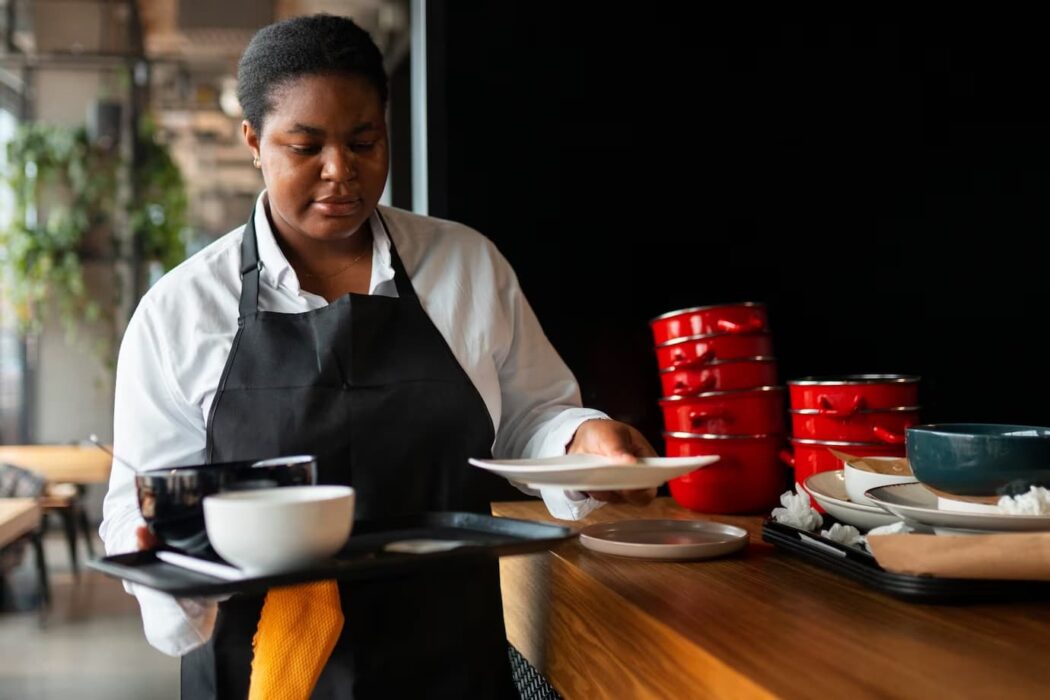
The Dishwashing Line Determines the Restaurant Kitchen’s Efficiency
The dishwashing area is one of the areas that can quickly cause a bottleneck in a busy kitchen. You want to ensure the washing area is easily accessible for all kitchen and restaurant staff so that utensils, pans, pots, and crockery are cleared and washed quickly—then placed back on the shelves for the chefs to serve new dishes.
Investing in a conveyor belt system where the dishes are cleared and then stacked in moving racks that glide through the machine and come out the other side ready to be dried and packed is a surefire way to ensure your restaurant kitchen runs like clockwork.
Upgrade to Hygenic Surfaces that are Easy to Clean
The surfaces in a kitchen restaurant need to be able to handle various types of food preparation and eliminate the chances of cross-contamination between food types, for instance, poultry and vegetable prep. This is why selecting a hygienic food prep surface is essential when remodeling a kitchen.
Stainless steel is the most popular material for food preparation surfaces in restaurant kitchens because it is durable, resistant to heat and germs, and easy to clean. It complies with food safety and health standards and is used on countertops, shelves, sinks, backsplashes, and even knives because of its versatility.
Conclusion
Doing a kitchen remodel doesn’t have to be confusing if you carefully consider the type of food that needs to be prepared and what type of kitchen equipment will make the tasks easier for the chefs and servers. Be sure to optimize efficiency in the kitchen by allocating specific food preparation stations that have a good workflow to ensure the food is cooked and served quickly and to the highest standards. Also, make sure that the servers can easily receive the dishes and offload dirty dishes to ensure the kitchen runs smoothly.